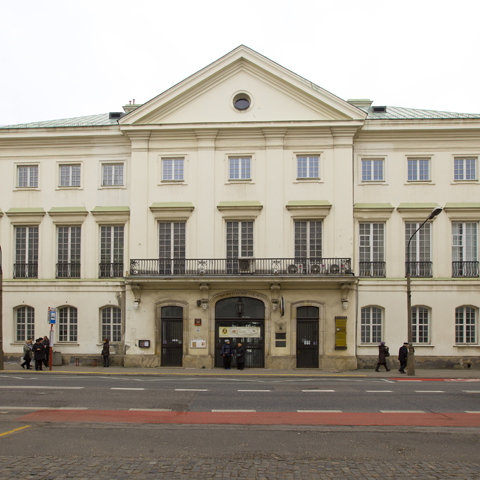Composers / Fryderyk Chopin / Places catalog
‘Honoratka’
Those who travelled great distances to Warsaw during the eighteenth century usually dined in baronial guest houses, even though there had been cafés and restaurants in the capital since the time of King Stanislaus Augustus. It was only after 1815 that modern, and increasingly crowded, restaurants, trattorias, wine bars and patisseries began to spring up all over the city. In Chopin's day, one of the most popular haunts was the ‘Honoratka’ café, named after the owner, Honorata Zimermann, at what is now ul. Miodowa 14. From 1828, it was housed in an annexe of the former Chodkiewicz Palace.
That palace frequently changed hands over the next few decades. By the end of the eighteenth century, it had belonged to the Grand Crown Hetman Piotr Ożarowski and then to the poet, inventor and chemist Count Aleksander Chodkiewicz. In 1812, Count Chodkiewicz founded Poland’s first lithography workshop. Lithography was a printing method that enabled paintings and sheet music to be reproduced incomparably more easily than before. In later decades, portraits of the famous Fryderyk Chopin were also widely circulated. An issue of the Kurier Warszawski from November 1849, for example, ran an advertisement placed by a bookshop on ul. Senatorska for a lithographic portrait of the composer, available for 5 zlotys. The artist was Maria Wodzińska, who had briefly been secretly engaged to Chopin over a decade earlier.
After Chodkiewicz, the palace’s owners included Col. Włodzimierz Potocki and, from 1827, Jan Kochanowski, valet to Grand Duke Constantine, whom Fryderyk Sarbek describes in his memoirs as ‘a cadets’ teacher, a descendant of the family of Jan the poet, and a good person, but fairly limited.’
The ‘Honoratka’ had a gallery where music was played in the evening during the first half of the nineteenth century. Jan Nepomucen Janowski, in his Notatki autobiograficzne [Autobiographical notes], recalls that the one-zloty entrance fee included a cup of good coffee or a suitable quantity of some other beverage.
During the 1830s, the café became one of the legends of the November Uprising. The ‘Honoratka’ was a meeting place for radicals, who concocted subversive plans around a small model of a guillotine.
-

Honoratka’s café. Phot. Waldemar Kielichowski.
-

Honoratka’s café. Phot. Waldemar Kielichowski.
-

Honoratka’s café. Phot. Waldemar Kielichowski.